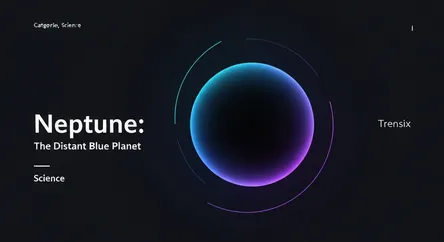Science
Neptune: The Distant Blue Planet

Discover Neptune, the eighth and most distant planet from the Sun. Learn about its icy composition, powerful winds, and mysterious blue appearance.
What is it?
Neptune is the eighth and most distant planet from the Sun in our solar system. Classified as an ice giant, its atmosphere is primarily composed of hydrogen and helium with traces of methane, which gives the planet its signature deep blue color. Neptune is known for having the fastest winds in the solar system, reaching speeds of over 2,000 km/h. It has a faint ring system and 14 known moons, the largest of which is Triton, a geologically active world that orbits Neptune in the opposite direction of the planet's rotation.
Why is it trending?
Interest in Neptune has surged thanks to new observations from powerful instruments like the James Webb Space Telescope (JWST). In 2022, JWST captured the clearest images of Neptune's rings in decades, revealing details not seen since the Voyager 2 flyby in 1989. These images and data are helping scientists better understand the planet's atmospheric composition, stormy weather patterns, and the complex dynamics of its ring and moon system, fueling new research and public fascination with this remote world.
How does it affect people?
While Neptune has no direct impact on daily human life, its study is crucial for science and technology. Researching this distant ice giant pushes the boundaries of telescopic capabilities and spacecraft engineering, leading to innovations that benefit other fields. Understanding Neptune's extreme weather and unique formation provides valuable context for how planetary systems, including our own, form and evolve. Ultimately, exploring Neptune inspires curiosity and expands humanity's collective knowledge, reminding us of the vast and mysterious nature of the universe beyond Earth.